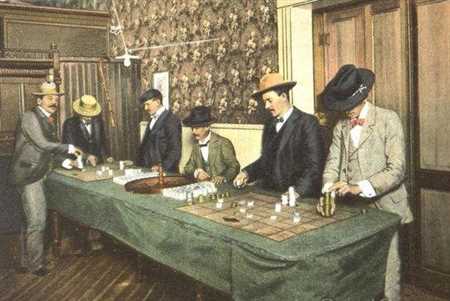

The allure of chance has captivated enthusiasts for generations, creating a rich tapestry woven with the threads of thrill and strategy. From the ancient civilizations to modern establishments, the act of rolling small objects for fortune has transcended time and place, becoming a universal pastime. The excitement found within these activities continues to draw players into a world where skill meets luck.
Over the decades, these popular pastimes have evolved, adapting to changing trends, cultural influences, and technological advancements. From simple gatherings among friends to sophisticated settings in vibrant entertainment hubs, the mechanics of competition have not only remained engaging but have also given rise to various formats and styles. Each iteration carries with it stories of camaraderie, rivalry, and unforgettable moments.
The intricate balance between fate and decision-making has established itself as a significant aspect of recreational rivalry. As players immerse themselves in the challenges offered by these entertaining pursuits, they become part of a legacy that spans various cultures and eras. With each roll, the anticipation builds, creating an electrifying environment filled with aspirations and hopes for victory.
The advent of chance-based activities can be traced back to ancient civilizations, where simple tools facilitated the art of risk-taking and fortune-seeking. Cultures across the globe embraced these playful methods, leading to the establishment of various forms that would evolve over centuries.
Among the earliest manifestations were small objects crafted from materials such as bone, wood, and stone, often fashioned into shapes that created the possibility of random outcomes. The significance of such implements extended beyond mere entertainment; they held a prominent place in rituals and social interactions.
As diverse cultures encountered one another, their approaches to these chance-based implements began to intermingle, resulting in a rich tapestry of traditions. This interconnectedness paved the way for novel concepts, ultimately forging lasting connections between communities through shared amusement.
The origins of chance-based activities can be traced back to ancient civilizations, revealing insights into human behavior and cultural practices. Evidence indicates that utilizing small objects for divination and entertainment has been a part of society for thousands of years, showcasing the universal appeal of randomness in decision-making.
Archaeological discoveries have unveiled artifacts believed to be some of the earliest examples of these pursuits. For instance, excavations in Mesopotamia have uncovered small clay objects dated to around 3000 BCE, which exhibit markings suggesting their use in a game of chance. Similarly, ancient Egyptian tombs have presented items resembling modern counterparts, further supporting the theory of widespread engagement in such activities from a young age.
In addition to these findings, the Indus Valley Civilization has also contributed to the understanding of early practices. Archaeologists discovered dice-like objects in this region, indicating a well-established tradition of randomness woven into the fabric of social interaction. The recurring appearance of these relics across diverse cultures suggests the fundamental human fascination with risk and luck throughout time.
The beginnings of this captivating activity can be traced back to ancient civilizations, where these objects played a pivotal role in social interactions, rituals, and decision-making. The allure of chance has fascinated humanity for millennia, reflecting the longing for fortune and unpredictability.
In Mesopotamia, archaeological findings reveal that small objects resembling modern cubes were used in various contexts, indicating an early form of entertainment and probabilistic decision-making:
Meanwhile, in Ancient China, similar objects emerged with their unique characteristics and purposes:
Both regions contributed significantly to the evolution of this form of entertainment, planting the seeds for future developments that would captivate people across cultures and eras.
The phenomenon of chance-based activities has transcended geographical boundaries, becoming a beloved form of entertainment in diverse societies. From ancient rituals to vibrant social gatherings, these activities have woven themselves into the cultural fabric, adapting to various traditions and customs over time.
In Asia, for instance, the art of chance has been embraced in numerous forms, often linked to festivals and communal celebrations. Traditional practices reflect not just a love for excitement, but also a sense of luck and fortune that plays a significant role in cultural beliefs.
Conversely, in Western nations, similar pastimes have evolved into competitive events, often characterized by strategical partnerships and tournaments. The social aspects encourage camaraderie among participants, thus reinforcing community bonds even amidst the thrill of competition.
This universal appeal underscores how societies interpret fortune and fate through shared experiences, laying the groundwork for lasting traditions that continue to thrive in contemporary settings. From local gatherings to digital platforms, the enduring charm remains an essential part of social interactions around the world.
The significance of small, multifaceted objects in ancient narratives reveals a deep connection between chance, fate, and the divine. These artifacts often serve as instruments for decision-making, reflecting the beliefs and customs of various civilizations.
From the ancient Egyptians to the Romans, the presence of these implements in sacred texts demonstrates their role not just as entertainment, but as a medium for understanding the cosmos.
The exploration of these artifacts in mythological contexts highlights their enduring nature and the complex relationship between randomness, choice, and the divine across cultures.
The ancient civilizations of Greece and Rome woven rich narratives around the act of chance and fate, notably reflected in their cultural expressions. These tales often showcased the significance of random events, unveiling the interconnectedness of luck, divine intervention, and human destiny.
Writings from both cultures reveal the societal value placed on moments of unpredictability, emphasizing not merely the thrill, but deeper philosophical contemplations on existence.
These ancient narratives helped shape cultural attitudes towards uncertainty, leaving a lasting legacy in the customs that developed around casual diversions centered on randomness and fate.
The rich tapestry of ancient philosophies has significantly shaped various recreational activities, infusing them with profound meanings. This influence stems from sacred texts that illustrate concepts of chance, fate, and moral dilemmas. The implications of these teachings resonate in contemporary practices, offering insight into the cultural significance behind certain pastimes.
In both Hinduism and Buddhism, the interplay between free will and destiny is pivotal. For instance, within certain rituals, the utilization of random elements serves as a metaphor for life’s unpredictability.
Collectively, these philosophies provide a deeper understanding of chance-based activities, positioning them not merely as forms of entertainment but as reflections of ancient wisdom and cultural narratives. Through this lens, the engagement with random outcomes transcends amusement, illustrating a connection to the spiritual and moral dimensions of existence.
The journey of small, numbered cubes used for wagering has been marked by innovation, adaptation, and cultural significance. Over centuries, these objects have transitioned from primitive tools of chance to integral components of wagering establishments, captivating players with their unpredictable outcomes. This transformation highlights the interplay between chance, strategy, and the thrill of risk-taking.
Initially, these artifacts were crafted from various materials, such as wood or stone, reflecting the customs of their time. As societies progressed, so did the craftsmanship involved in their production. With the advent of technology, mass production allowed for a wider distribution, leading to the development of standardized formats that enhanced fairness and consistency in outcomes.
Throughout different epochs, these objects have maintained a prominent place in various cultures, often regarded as symbols of fortune and fate. Their appeal is universal, transcending geographical boundaries and social classes. This universal fascination has prompted an array of variations and adaptations, ensuring their relevance in contemporary entertainment.
In the present day, the role of these small cubes has expanded beyond physical environments to include online platforms, reshaping the landscape of interactive entertainment. Innovative algorithms and random number generators have brought forth a new era, allowing players to engage in traditional activities from the comfort of their homes while preserving the core experience that has entranced enthusiasts for generations.
Ultimately, the evolution of these chance-based tools reflects not only the changing dynamics of entertainment but also the enduring human desire to embrace uncertainty. The ongoing fascination with these objects serves as a testament to their vital role in leisure culture, bridging the ancient with the modern.
The evolution of random chance activities during the medieval period in Europe reveals a fascinating interplay of culture, society, and leisure. This era saw various forms of entertainment that were not only thrilling but also served as a reflection of the values and norms of the time. The clamor of chance mechanizations began to resonate in taverns, courts, and public spaces, signaling a growing attraction to such diversions.
During this time, several variations emerged, often influenced by social class and local customs. The nobility indulged in more intricate pastimes, often organizing lavish events where stakes were high, while common folk enjoyed simpler forms of chance mechanics, typically played in a casual atmosphere. The presence of specialized tools for these activities became more widespread, with artisans crafting finely designed implements that appealed to various audiences.
Moreover, the intersection of law and chance was evident, as authorities sought to regulate these entertainments due to concerns over gambling addiction and societal impact. Legislation often arose to either promote or restrict such activities, leading to a complex relationship between playful amusement and governance. As the medieval era progressed, these moments of risk-taking became embedded within the cultural fabric, paving the way for more structured forms of entertainment in the centuries ahead.
In conclusion, the medieval period laid significant groundwork, influencing the way chance-based amusements were perceived and enjoyed. The social dynamics and legal frameworks established during this time would ultimately shape future trends in recreational activities, demonstrating the lasting impact of these early experiences.